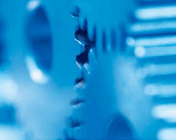 |

|
|
Second-Generation Features Help Drive Remote Deposit Adoption Corporate use of remote check deposit products is finally taking off, in part due to new features that streamline accounts receivable posting, reduce risk and add convenience. Despite all of the excitement around the Check 21 law when it went into effect in fall 2004, check image exchange between banks, and remote check deposit, didn't gain much momentum until late 2006. However, in just one year, between November 2006 and November 2007, the number of check images exchanged by banks more than doubled, going from about 10 million items a day to about 35 million, according to industry statistics. During that same period, the number of financial institutions exchanging check images grew from about 3,600 to about 8,200. Manuel Caballero, a Vice President in Product Management at Deutsche Bank and a Check 21 expert, says he isn't aware of statistics specifically documenting increased use of remote deposit products. However, at banking conferences like BAI TransPaySM, speakers typically cite 250,000 to 300,000 as the number of active scanners. Beyond the Original Benefits From the start, remote deposit has enabled companies to scan checks at store or office locations and deposit them by transmitting files of the check images and related information to their bank. One of the most appreciated benefits has always been that companies are able to eliminate employee trips to the bank along with the related risks and transportation costs. For companies that use couriers to make deposits, it eliminates those costs. What's more, with remote deposit, companies are no longer bound to the business hours of their local bank branches to make their daily deposits. In essence, remote deposit extends their daily deposit window. In addition, by eliminating geographic constraints as a factor in depositing checks, remote deposit allows companies to consolidate depository banking relationships, meaning they can reduce the number of bank accounts they maintain and lower bank fees. So why didn't remote deposit take off back in 2005? 'Bugs' and Missing Features One such feature, which now is being incorporated into most remote deposit products, is the ability for users to input more detailed information about each check that's scanned — information that can streamline the accounts receivable posting process. For instance, using most second-generation remote deposit systems, an insurance office staffer can scan premium checks and key the related policy number into the remote deposit system. Today's remote deposit products typically provide expanded data fields that accommodate such customer-defined information. Some other capabilities that are now generally available with second-generation remote deposit products, making these products more attractive, include:
db-Remote Cash Letter Another feature that Deutsche Bank is interested in adding to its db-RCL for 2009 is the ability for US companies to scan and deposit Canadian checks. Canada's version of Check 21, known as Truncation Electronic Cheque Presentment, or TECP, isn't expected to be in effect until next year. View other articles in this edition |

|
||||||||||||||||
 It's Alive! Yes, SEPA Has Arrived
It's Alive! Yes, SEPA Has Arrived